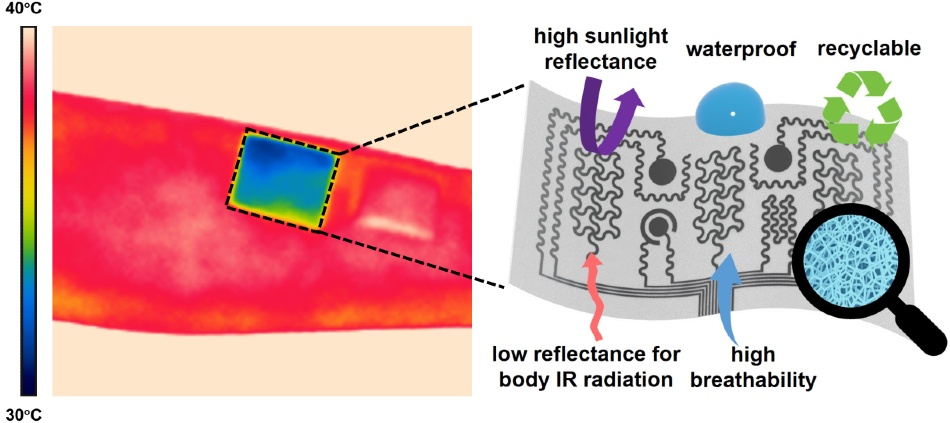Jan 7 2020
In the future, soldiers could use “wearable air conditioning,” an on-skin device developed by engineers from the University of Missouri, to cool down on the battlefield. This would protect them from exhaustion or heat stroke.
 An on-skin device designed by engineers at the University of Missouri can achieve around 11 °F of cooling to the human body. The device also includes numerous human health care applications such as the ability to monitor blood pressure, electrical activity of the heart, and the level of skin hydration. Image Credit: University of Missouri.
An on-skin device designed by engineers at the University of Missouri can achieve around 11 °F of cooling to the human body. The device also includes numerous human health care applications such as the ability to monitor blood pressure, electrical activity of the heart, and the level of skin hydration. Image Credit: University of Missouri.
In addition, the device includes various human health care applications, for example, the capability to monitor electrical activity of the heart, blood pressure, and level of skin hydration.
The study outcomes have been described in the Proceedings of the National Academy of Sciences journal.
In contrast to similar products that are currently used and other concepts, this waterproof and breathable device has the potential to deliver personal air conditioning to a person through a process known as passive cooling. This process does not involve the use of electricity, commonly used in fans and pumps. Therefore, researchers believe it ensures minimal discomfort to users.
Our device can reflect sunlight away from the human body to minimize heat absorption, while simultaneously allowing the body to dissipate body heat, thereby allowing us to achieve around 11 degrees Fahrenheit of cooling to the human body during the daytime hours. We believe this is one of the first demonstrations of this capability in the emerging field of on-skin electronics.
Zheng Yan, Study Corresponding Author and Assistant Professor, College of Engineering, University of Missouri
At present, the device is a small wired patch, and according to the scientists, a wireless version may be developed within one to two years. They are also hopeful of applying this technology to “smart” clothing someday.
Eventually, we would like to take this technology and apply it to the development of smart textiles. That would allow for the device’s cooling capabilities to be delivered across the whole body. Right now, the cooling is only concentrated in a specific area where the patch is located. We believe this could potentially help reduce electricity usage and also help with global warming.
Zheng Yan, Study Corresponding Author and Assistant Professor, College of Engineering, University of Missouri
The paper titled “Multiscale porous elastomer substrates for multifunctional on-skin electronics with passive-cooling capabilities” was published in Proceedings of the National Academy of Sciences.
Other authors of the study are Yadong Xu, Bohan Sun, Yun Ling, Qihui Fei, Zanyu Chen, Xiaopeng Li, Shivam Goswami Yixuan Liao, Shinghua Ding, Qingsong Yu, Jian Lin, and Guoliang Huang from the University of Missouri; Peijun Guo and Nari Jeon from Argonne National Laboratory in Lemont, Illinois.
This study was funded by the University of Missouri start-up fund and a grant from the Air Force Office of Scientific Research.